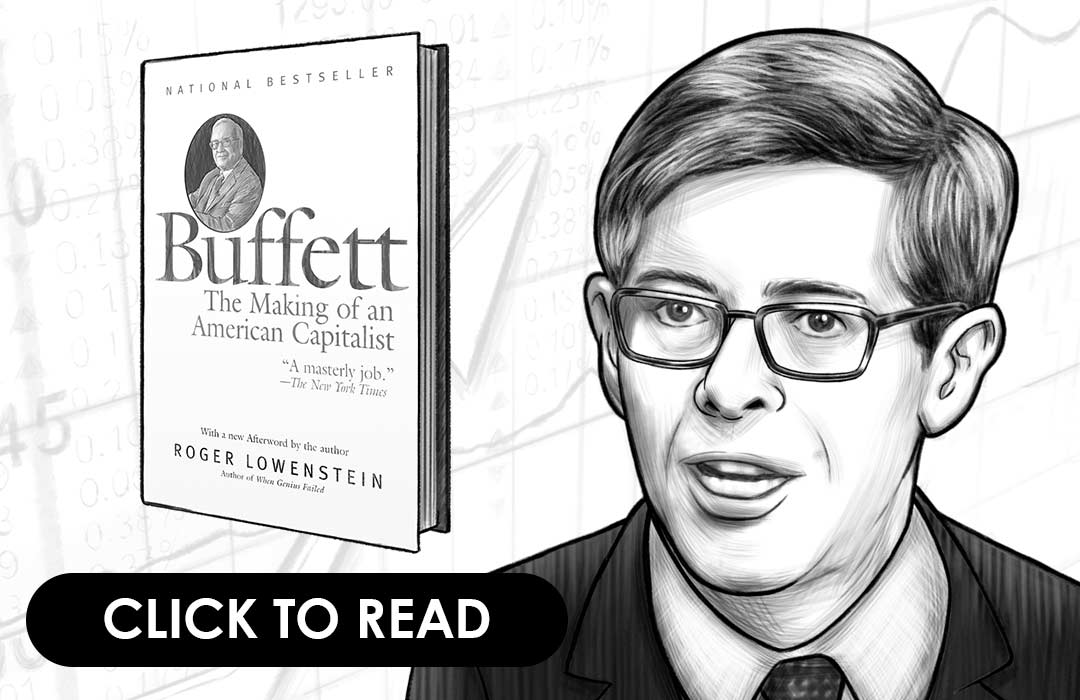An Executive Summary Of The Lean Startup
By Eric Ries
WHO IS ERIC RIES?
Eric Ries, born on September 22, 1978, is an entrepreneur who co-founded IMVU. He created the Lean Startup concept, and also maintains a blog that mainly focuses on how entrepreneurs can prevent mistakes while struggling with a startup. Currently, Ries serves as the board member for several start‐ups and venture capital businesses. Read on to know more how you can excel with your startup in his book: The Lean Startup.
Understand the financial markets
in just a few minutes.
Get the daily email that makes understanding the financial markets
easy and enjoyable, for free.
CHAPTER 1: START
The first phase of beginning a startup can make many entrepreneurs nervous. Therefore, they ignore the fact that entrepreneurship also requires management. This, in turn, leads to chaos in the company, and the startup finally fades away. To avoid such problems, entrepreneurs can follow the Lean Startup concept that is designed to drive the firm. Instead of cooking up elaborate plans that rely heavily on assumptions, you can make a few changes in your firm. These changes where you build, measure and learn will not only help you but will improve things for your company.
Sure, it’s quite daunting to face many issues when you’re just starting. However, for instance, if you take the wrong route to your destination, you don’t just quit, but instead, you find ways to correct your mistake. Similarly, startups need you to be perseverant and focused. Every successful startup begins with a vision, and a collection of strategies, business models, ideas and hard work gives birth to a product.
CHAPTER 2: DEFINE
General Managers of companies are often given the task of building new products to grab opportunities prevailing in the market. Of course, they are good at what they do, but what should be done if they are clueless about converting innovations into products that suit the real world? Managers are only shown directions to set up a system, but how should they continue once the team is set? Well, that’s where the Lean Startup comes in.
Just like entrepreneurs, managers also have a tremendous responsibility to oversee things in the company. It’s no wonder that they are sometimes referred to as “intrepreneurs” because their work is a lot similar to entrepreneurs. Thus, the Lean Startup helps not only the entrepreneurs, but it also helps intrepreneurs who are great visionaries too. At the end of the day, companies can expect growth only when they develop an “innovation factory” which utilizes Lean Startup methods to create innovative, disruptive products often.
CHAPTER 3: LEARN
When startups fail, entrepreneurs and managers fall back on the oldest excuse – learning. When a firm fails to execute anything successfully, they simply state that they failed but learned something at the end of it. However, having said that, the most vital factor for a company to forge ahead rests on learning too. Not only do teams have to learn whether their products are worthwhile, but they also have to think about customers, because no matter how much time or effort you put in, everything depends on the customers.
With the Lean Startup, learning is a little different since it’s rehabilitated into a concept known as validated learning. One doesn’t have to come up with excuses to hide failure, but it demonstrates success even when the company is struggling with a lot of uncertainty. In other words, it’s about learning the truth regarding a company’s present and other prospects in the future.
CHAPTER 4: EXPERIMENT
If a company hesitates to experiment, it simply fails to learn. It’s essential for companies to conduct experiments since it allows them to predict the future to a certain extent. Every firm’s goal is to build products around their vision, and that’s possible only by experimenting. Consider Zappos – an online shoe store – for instance. Nick Swinmurn, the founder, had a hypothesis that customers would love a shoe store online. He experimented by clicking pictures of shoes available in retail stores and posted them online to sell them. His experiment helped in various ways since he also found what the customers really wanted.
If a firm yearns for long‐term change, it must begin to experiment immediately. Also, they need to think about the customers first. If your product is a solution to some problem, you need to figure out if the customers genuinely have that problem. Even if your product seems like the perfect solution, do you think that they will purchase it? Most importantly, will they buy it from you? The answers to these questions can be sought only after experimenting, and this is why more companies must indulge in experimenting rather than waiting for the perfect time to launch their products.
CHAPTER 5: LEAP
When the founders of Facebook arrived at Silicon Valley, it was astonishing to see their growth rate. Not only had they not spent any money on marketing, but it was even more surprising that their service was completely free! So, what can others learn from them? Will your business run well if you spend nothing on marketing, or should the service be free in the early days? It’s not possible to answer these questions because there are multiple factors involved, but it’s important to note that the founders experimented and adopted techniques that worked uniquely for them.
Additionally, the founders of Facebook made numerous assumptions, which in other words, was their leap of faith. They knew that the advertisers would be interested in paying for their services, thanks to their high traffic. Similarly, other entrepreneurs make such assumptions, but what’s of paramount importance is that one should verify those assumptions. It’s also essential that you believe in that leap of faith since it’s the only thing that could make all the difference between success and failure. Over time, you can develop strategies based on those very assumptions if you have the courage to believe in them.
CHAPTER 6: TEST
If companies launch a product that fails, they need to come up with an MVP – minimum viable product – that helps them understand the process quickly. Not all products are perfect, and many will fail, but even if your product isn’t the smallest available, it’s the fastest way to get back on track again. Many companies go through several years of product testing and this long incubation period focuses on perfection, but on the other hand, the MVP helps with minimal effort.
Also, when you release a product, it’s normal to expect a few hitches in the beginning. For instance, when Eric showed the gross revenue of IMVP, which was very low, they were certainly embarrassed, but it was obvious that the product had a future since the revenues were flowing due to early adopters or customers who bought the product early. Even Apple didn’t have all the features in its basic iPhone when it was released in the market, but it definitely captured a lot of interest. Many people are happy with products that aim to solve at least 80% of their problems since they aren’t asking for perfection.
CHAPTER 7: MEASURE
Many entrepreneurs must stop once in a while to measure their progress. Now, progress isn’t only about changes made in the product design or anything else, but it’s also about accounting. Accounting has too many myths surrounding it, and it’s usually avoided like the plague; however, the fact remains that startups cannot survive without accounting that is designed specifically for disruptive innovation, and this is known as innovation accounting.
Innovation accounting helps companies develop a systematic, disciplined approach to determine and measure progress. This also helps entrepreneurs understand whether there’s any scope for validated learning. In simple words, innovation accounting is nothing but converting the leap of faith into a working financial model. It works in three steps where the first step is to use an MVP to determine where the company stands currently. Secondly, startups need to prepare themselves to transform from a mere baseline to an ideal scenario, and after that’s done, they need to make a decision as to whether they choose to preserve or pilot, which is the third and final step.
CHAPTER 8: PIVOT OR PRESERVE
Every entrepreneur faces a point where he has to make a decision as to whether the company has to preserve or pilot. Is the company progressing so beautifully that it needs no changes? Is it enough to preserve what the company has or does it need new changes? This change – known as a pivot – is nothing but a structured correction to test whether the present hypothesis of the company is in the right direction.
Many entrepreneurs may also regret their decisions where they chose to preserve even when the stats were in right of front of their eyes. We’ve all heard of success stories boasting about the power of perseverance, but it can be equally dangerous because if a company fails to pilot at the right time, they may reach a point where there’s nothing else to do but survive. There’s no life left in the company anymore, and it simply continues to live for another day. Therefore, to avoid this, listen carefully to your market feedback to improve consistently.
CHAPTER 9: BATCH
Companies involved in manufacturing products should pay attention to efficiency. For example, if you want to stuff a hundred letters into envelopes one by one, it’s best to complete one envelope at a time to save time although it sounds counterintuitive. This approach of batch production will help companies even if it appears to be inefficient because things are done faster in small batches. We normally believe that we get better and faster with time; however, manufacturing processes don’t work that way.
The advantage of using the batch process is that companies are likely to determine any flaws in their product sooner when compared to large batches where everything is supposed to be done at once. For instance, if there was a defect in some of the letters that are to be stuffed into the envelopes, you have an edge if you complete one envelope at a time instead of wasting your time in the end.
CHAPTER 10: GROW
Many times, companies are almost choked when they hit a plateau. Everything seems great on the surface, but without growth, there is no possibility to attract new customers. So, how does an entrepreneur ensure that the company grows progressively? It can be achieved in four steps where the first step is to embrace the power of word-of‐mouth marketing. If you satisfy customers, they will sing your praises and boost your growth automatically.
The second step is the influence of product usage. For example, if you send money through products like PayPal, the receiver is exposed to the product instantly, which in turn helps the company grow more. The third way is to utilize the revenue to fund advertisements instead of relying on investment capitals, and the fourth step is to design a product that demands repeated use like subscriptions, groceries, etc.
CHAPTER 11: ADAPT
With conditions changing constantly, businesses are always under pressure to adapt to current conditions. While it can seem like a nightmare to most entrepreneurs, there’s no need to panic since you can always build an adaptive organization that helps you change according to the present scenario. In fact, you don’t even have to stop working, but you simply have to invest some time to build a training program that can educate the rest of the people in the company. This program can also be revised consistently to make it extremely effective over time.
Understand the financial markets
in just a few minutes.
Get the daily email that makes understanding the financial markets
easy and enjoyable, for free.
CHAPTER 12: INNOVATE
The common myth is that companies fail to advance when they grow too large; however, this myth is simply untrue. In fact, entrepreneurs can come up with new ideas while maintaining their current business models all at the same time, and that can be done by nurturing disruptive innovation. Companies must allocate considerable resources for teams working internally. Also, this will work only when the members have a personal stake in the project, and this will prevent any insecurity in the future.







